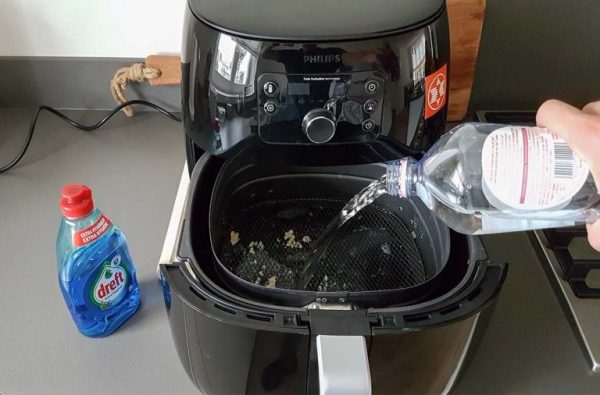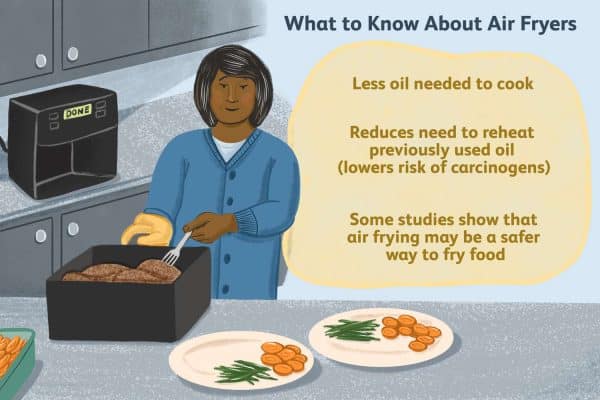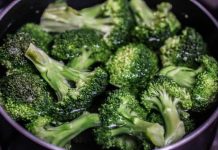Are you considering purchasing an Airfryer to enjoy guilt-free, crispy meals? Before making a decision, it’s essential to understand the downsides of this popular kitchen appliance.
While Airfryers are celebrated for their ability to produce delicious fried foods with minimal oil, there are a few drawbacks to be aware of.
From limited capacity to longer cooking times, read on to uncover the less glamorous side of owning an Airfryer.
Limited cooking capacity
Small food capacity
One of the significant downsides of an Airfryer is its limited cooking capacity. Due to its compact size, Airfryers have smaller food capacities than traditional frying methods.
If you are cooking for a large family or planning to host gatherings, you might find preparing enough food at once challenging. It can be frustrating to have multiple batches in succession, extending the cooking time and potentially leaving you with cold or overcooked food.
Long cooking time
Cooking time is longer than traditional frying methods.
Another drawback of using an Airfryer is that cooking takes longer than traditional frying methods. While Airfryers are marketed as a healthier option, the trade-off is that cooking your food thoroughly takes longer.
The hot circulating air in an Airfryer needs more time to penetrate the food and create the desired crispy texture. Therefore, an Airfryer might not be the most practical choice if you are looking for a quick meal solution.
Requires frequent shaking or turning
Food needs to be shaken or flipped during cooking.
Using an Airfryer often requires you to pause the cooking process and shake or flip the food to ensure even cooking. While this may not seem like a significant inconvenience, it can be time-consuming, especially if you are preparing a large batch of food.
It interrupts the cooking process and can prolong the overall cooking time. Additionally, constantly opening the Airfryer to shake or flip the food may lead to heat loss, affecting the cooking efficiency.
Limited cooking options
Only suitable for certain types of food
Another downside of Airfryers is their limited cooking options. While they are great for cooking certain types of food, such as French fries, chicken wings, or even baked goods, they may not be as versatile for a wide range of recipes.
Air fryers are designed explicitly for air frying, which limits their functionality compared to other cooking appliances. If you enjoy experimenting with diverse recipes or prefer a cooking method that allows for more flexibility, an Airfryer might not be the best fit for your needs.
Can cause dryness
Food may become dry
Due to the high-speed circulation of hot air, Airfryers tend to cause dryness in certain foods. While they do a decent job of creating a crispy exterior, the lack of moisture retention can cause the food to become dry on the inside.
Suppose you prefer moist and juicy results, especially when cooking items like meats or vegetables that require retaining their natural moisture. In that case, you might be disappointed when using an airfryer.
May produce uneven results
Food may not cook evenly.
Achieving consistent and evenly cooked results can be a challenge with an Airfryer. The circulating hot air might not reach every nook and cranny of the food, resulting in uneven cooking. This can lead to food portions being overcooked while others remain undercooked.
While some Airfryer models have features like rotating baskets or shelves to minimize this issue, the risk of uneven results still exists. It can be frustrating to anticipate a perfectly cooked meal only to find that some portions are not up to par.
Requires preheating
It needs to be preheated before use
Unlike traditional frying methods, where you can dive right into cooking, Airfryers require preheating before use. Preheating adds time to the cooking process, which can be inconvenient if you are in a hurry or trying to prepare a quick meal.
It is essential to factor in the preheating time when planning your meals, particularly if you have a busy schedule or limited time to spare. This extra step may not satisfy your desire for a hassle-free cooking experience.
Not suitable for certain ingredients
Not recommended for foods with high water content
Air fryers may not be the best choice regarding certain ingredients with high water content. Foods like steamed vegetables or soups, which rely on the steaming or boiling process to develop their flavors, may not achieve the desired texture when cooked using an airfryer.
The hot circulating air lacks the moist environment required for these ingredients to cook correctly. If you frequently cook dishes with high water content for their taste and texture, you may find that an Airfryer does not meet your cooking needs.
It can emit a strong odor
Certain foods can release strong odors during cooking
While cooking certain foods in an Airfryer, you may experience strong odors from the appliance. Foods like fish, garlic, or onions tend to release potent odors when cooked, and these aromas can linger in the kitchen or surrounding areas.
While some individuals may enjoy the smell of these foods, others may find it overpowering or unpleasant, especially if they have sensitivities or allergies. If you are particularly sensitive to strong smells or have concerns about lingering odors in your home, an Airfryer may not be your ideal kitchen appliance.
Can be expensive
Air fryers can be pricier than traditional frying methods
One factor that should be considered before purchasing an Airfryer is its price. Air fryers can be more expensive than traditional frying methods, such as a deep fryer or a conventional oven.
While they offer the advantage of healthier cooking with less oil, the higher price tag may not be a cost-effective investment for some individuals. If your budget is limited or you are looking for an affordable cooking option, you may want to explore other cooking methods that provide a similar outcome at a lower cost.
In conclusion, while Airfryers offer the benefit of healthier cooking with less oil, they come with several downsides that should be considered before purchasing. The limited cooking capacity and long cooking time may pose challenges, especially for larger families or those who prefer quick meal solutions. The requirement for frequent shaking or flipping can be time-consuming and inconvenient.
The food’s limited cooking options, potential dryness, and the possibility of uneven results may not meet the expectations of individuals looking for versatile cooking methods. Additionally, the need for preheating, limitations with certain ingredients, strong odors during cooking, and the higher price compared to traditional frying methods are factors to be taken into account.
While an Airfryer can y be a valuable addition for some households, it is essential to carefully consider these downsides and evaluate whether it aligns with your cooking preferences and lifestyle beforinvestingst in one.









































